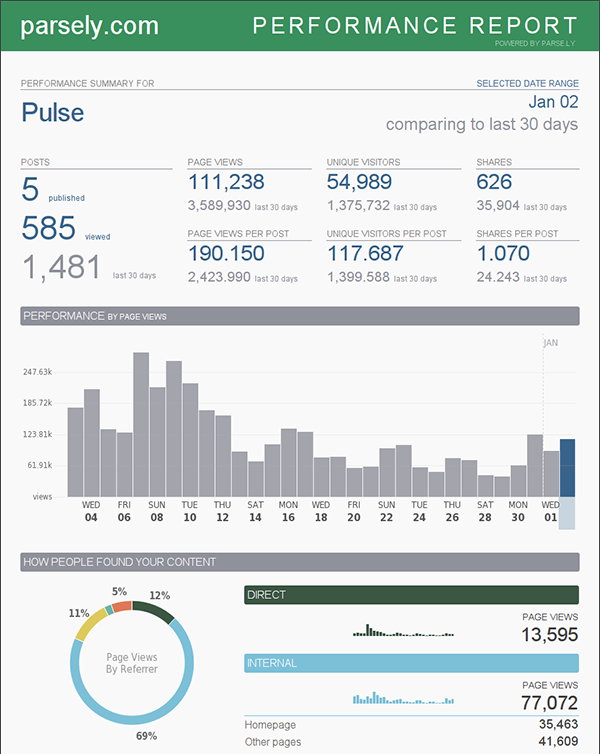Digital Media Trends in 2013
Here at Parse.ly we try to understand what our clients need in terms of larger media market trends. What’s driving feature requests that come in, and how do they make sense within the changing media industry? We make sure we respond to product requests as part of a larger market need to ensure that we’ll be serving everyone better.
This approach helps us with future features, but as a new year begins, we’re taking a look at the changes we made and the feedback we heard in 2013. Did they reflect the larger industry? How did our clients fit into the major trends that we saw?
Here are the three top trends that we saw affect digital media in 2013, and how we responded with product updates.
Complicated editorial workflows. Whether it’s using clunky CMS, keeping up with social media, integrating video or podcasts, or something else, the time editors and reporters spend on research, writing, and editing continues to decrease. This includes time spent investigating analytics data. Two big initiatives in 2013 focused on a full suite of easy-to-understand automated email reports and a Google Chrome browser extension. We’ve tried to make sure Parse.ly fits smoothly into an editorial workflow, saving our customers time and letting them focus on doing what they love.


The rise of native advertising/sponsored content. If you missed this one, you weren’t paying attention. Beyond the questions about how these pieces should be presented to consumers, publishers also need to understand how to communicate the the results of these campaigns to their clients and internal teams. Impressions and click-through-rates will not be helpful metrics for understanding how a sponsored post is doing. This year, we created Shareable Links and Performance Reports so that publishers could send campaign results that make sense to marketers and account managers.
As brands learn how to “Act like Publishers” they also need to learn how to understand their content like publishers. Will this lead to more native advertising? More original content on brands’ websites? We expect to see brands working with the same types of data that publishers analyze.
The publishing industry rethinks everything. We admit it, this one’s a little broad. But this year saw everything from data scientists studying why pageviews will not be the only metric that matters for publishers, to subscription products that failed and succeeded, to an influx of private investment into media. With change comes new challenges that can only be addressed by asking the right questions and getting the right data.
We’ve spent a lot of time finding ways to give clients answers to the questions they need to ask, but we expect this to be an on-going evolution, both in the market and in our product. We’re looking forward to spending 2014 helping anyone who publishes content — whether on the editorial, product or business side — achieve success on the web!